

fort san lorenzo ruins, panama san lorenzo ruins
Fort San Lorenzo resides west of the Panama Canal and is perched high on a cliff overlooking the mouth of the Chagres River, where it empties into the Caribbean Sea.
The ruins are secluded, and lush tropical rainforests blanket the surrounding area. Weather permitting, you should have spectacular views of the coastline and northernmost section of the Chagres Rivers.
The historical site resides within the San Lorenzo Protected Area, which measures 30,000 acres, and was once part of the Canal Zone territory. The park maintains several walking trails, though they are unrelated to the ruins.
Like Portobelo, Fort San Lorenzo was declared a World Heritage Site by UNESCO in 1981.
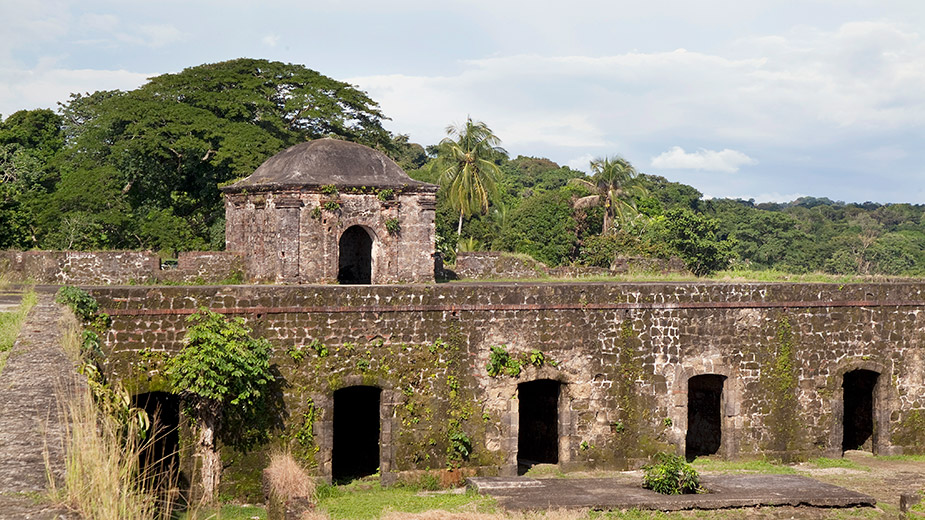
Whereas the ruins at Portobelo occupy several different locations and are an integral part of the town, those at San Lorenzo are limited to just one site and are secluded, surrounded by lush, tropical rainforest, as depicted in the picture above. They reside on an outcropping and are fenced in on three sides by cliffs that plunge hundreds of feet to the sea below. Despite this constraint, the ruins are more substantial and complex, most notably because they consist of two levels.
Fort San Lorenzo is a bit deceiving from the entrance because so little of it is visible. The ruins resemble a horseshoe, with its open courtyard facing west towards the Caribbean Sea. Upon entering the site, you have the option to proceed straight over the bridge and towards the large turret or follow the walking trail left.
The terrain encompassing the ruins is flat and primarily grass, making walking around very easy. Generally speaking, the ruins are in good condition, and their surroundings are well maintained.
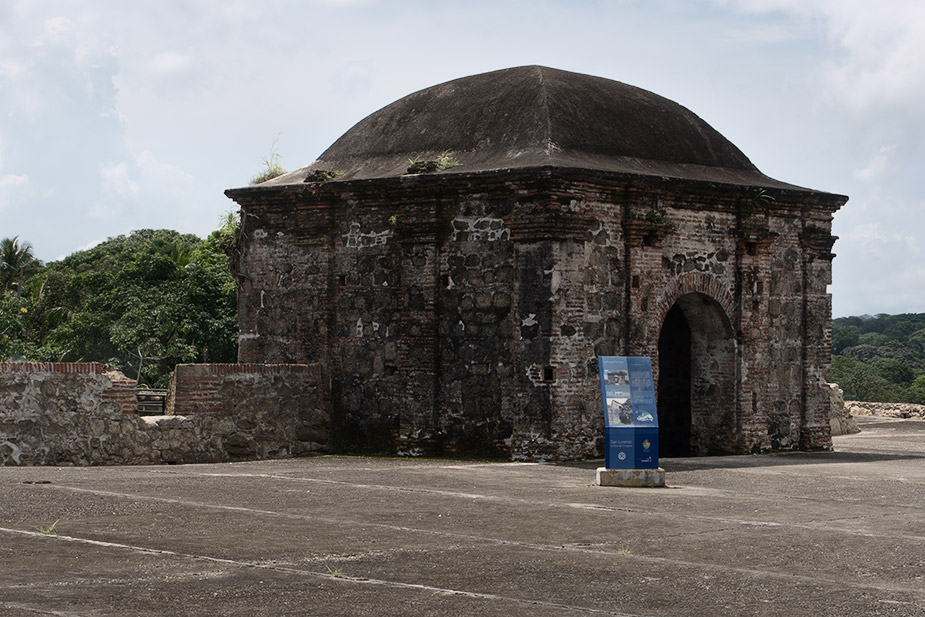
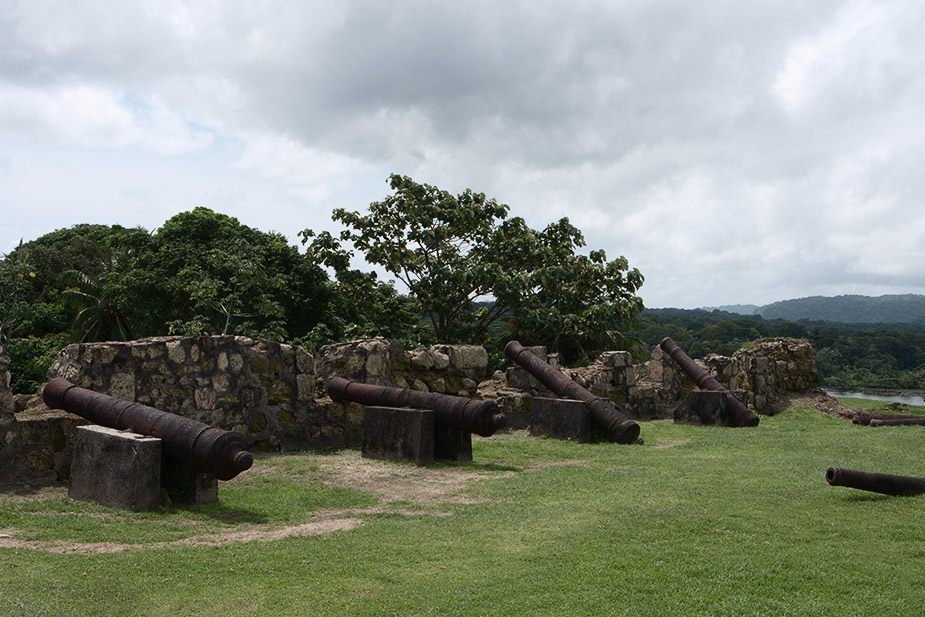
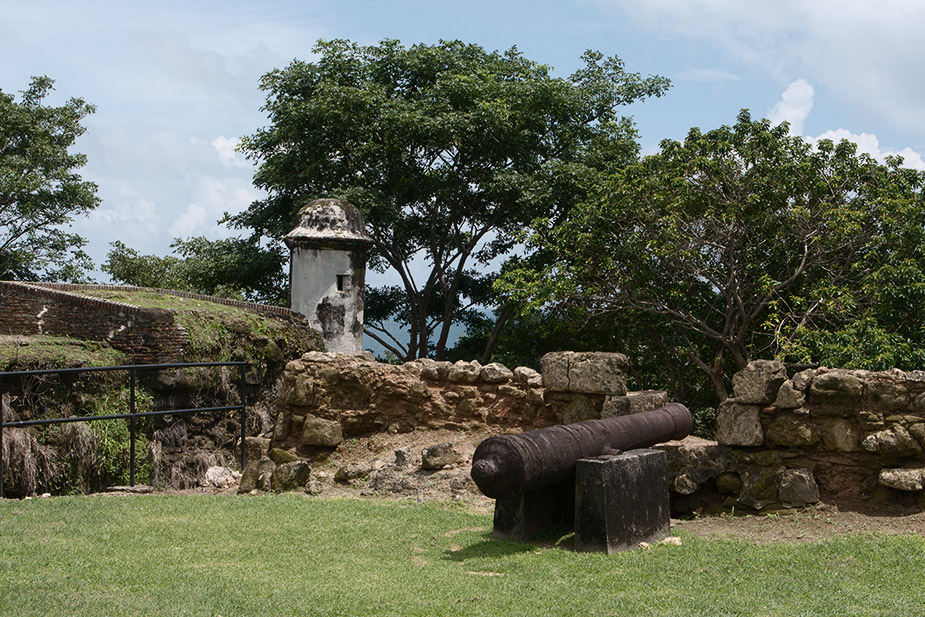
The bridge, which crosses over a deep moat that wraps around the east and north sides of the fort, leads you out onto the upper level. Across the bridge, you will find cannons on both sides and lookouts off to the right. The immense fortress, San Lorenzo's most recognizable and prominent structure, is directly in front of you. The upper level is open and flat and offers expansive views of the courtyard and ruins below and the surrounding area. It extends the entire length of the fort. On the left side is a cement path that gradually descends to the courtyard below..
The walking trail leads you along the left side of the ruins before descending to the right into a deep moat. You will quickly appreciate the sheer immensity of the fortification walls, which, in some areas, measure 30-40 ft. in height. Further along is a steep, cement staircase on the right side, which you can climb if you wish to visit or return to the upper level. As well, there is an open cavern along the left wall. The moat continues along the eastern boundary until it reaches the northeast corner. It then turns left and enters a large open area extending to the far end of the ruins. Approximately mid-way, along the massive fortification wall, is an opening that leads you into one of the caverns. This particular cavern exits into the courtyard on the wall's opposing side.
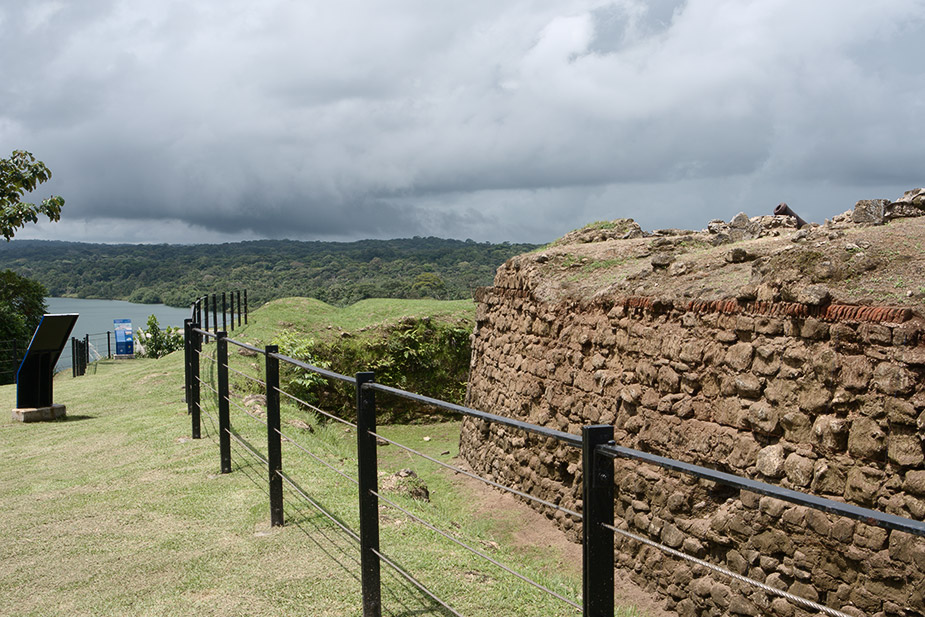
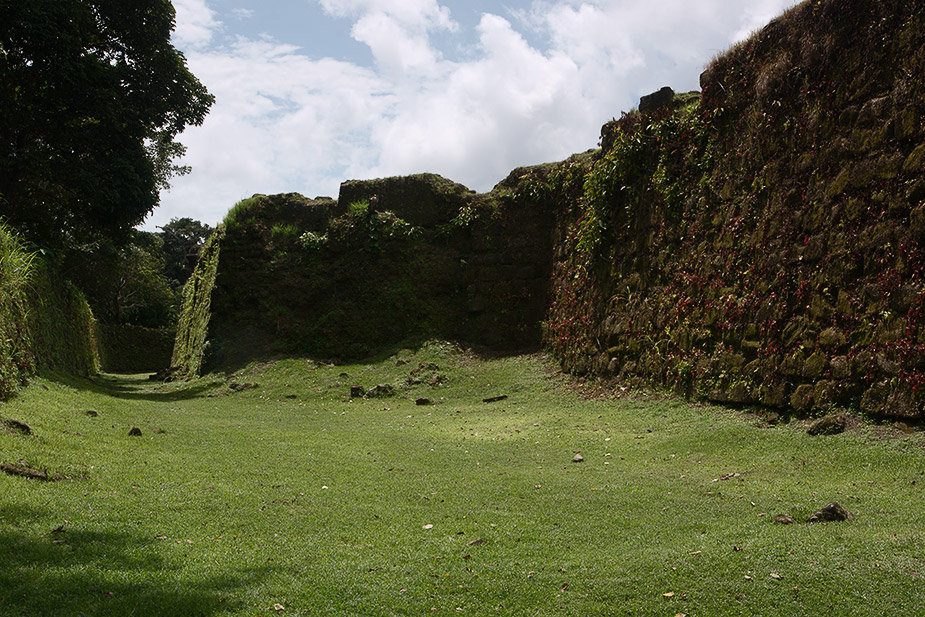
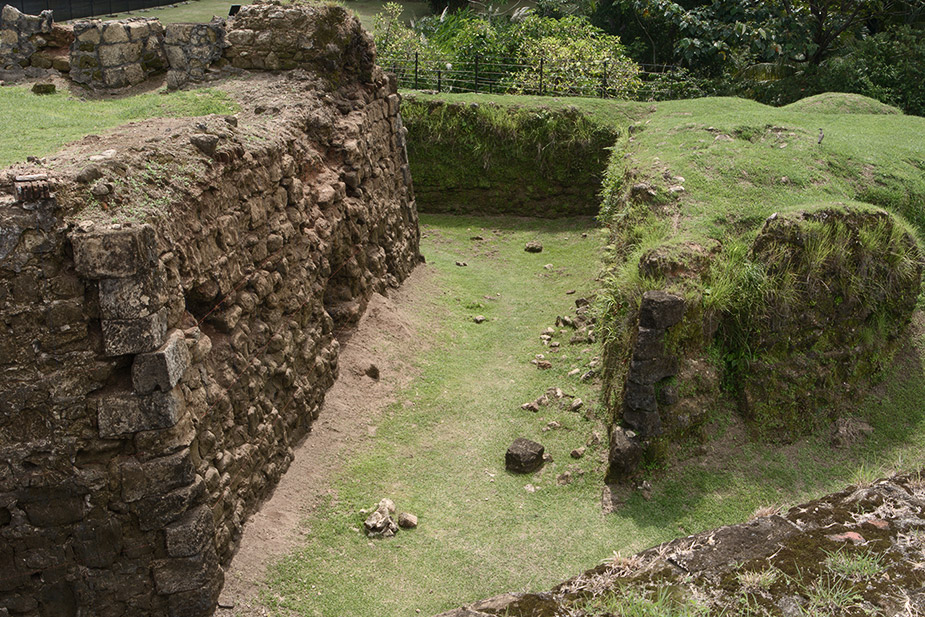
The courtyard in the middle of the fort contains more ruins and grants access to seven caverns. Five are spread evenly along the east or inland wall, and the remaining two are along the north. All but one has a single entrance. The cavern mentioned above, the westernmost cavern along the north wall, has two entryways. The rear door leads into the moat that runs along the fort’s northern border.
The caverns are empty and dark, and the floors consist of dirt, rock, and grass. There isn’t much to see, but they are an intriguing component of Fort San Lorenzo and worth a peek inside.
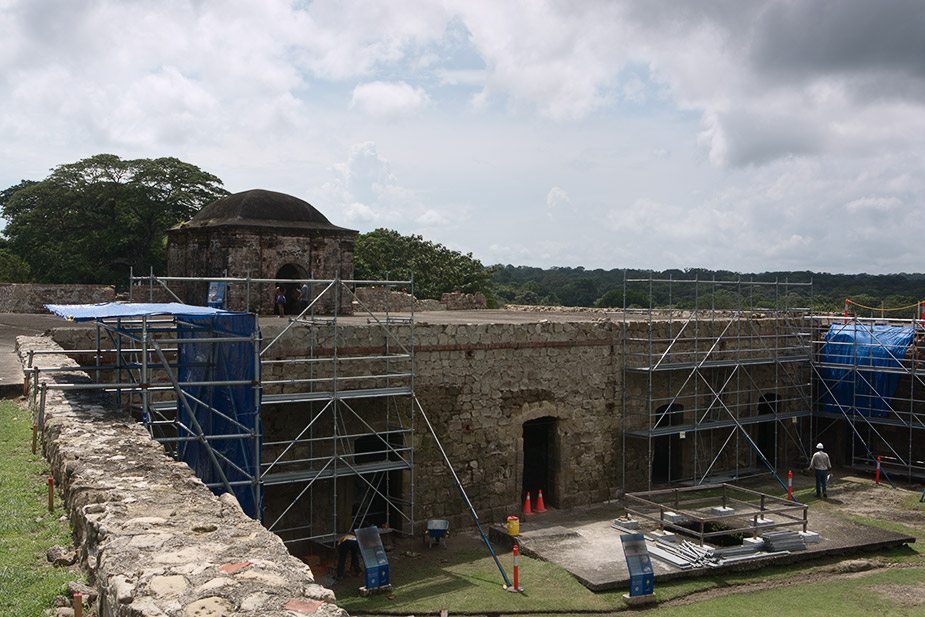
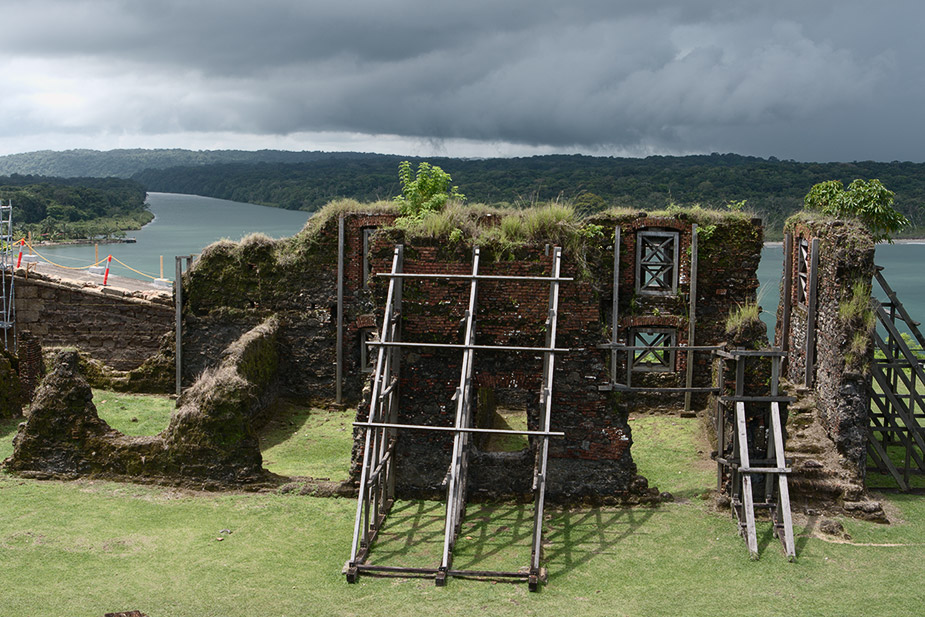
As you can see in the pictures above, Fort San Lorenzo is undergoing a massive restoration project, expected to last between 1-2 years. Partially funded by the Interamerican Development Bank, an estimated $25 million has been earmarked to restore Fort San Lorenzo and Fort Portobelo. Despite their ongoing efforts, visitors have full access to the historical site and incur a few — if any — inconveniences. It does make picture-taking challenging, however.
There is a $5.00 entrance fee, which you must pay at the park office. The office resides off to the left, immediately before the ruins.
There is no public transportation to Fort San Lorenzo. Taxis in Colon charge $30.00, which includes an agreed-to amount of time at the ruins, typically 1 - 1.5 hours. If you would like for them to wait longer, you should expect to pay more. The drive, which takes you over the newly built Atlantic Bridge, takes approximately 35-40 each way.
The early portion of the drive is in the open with little cover, but when you reach the turn-off for Shelter Bay Marina after passing Fort Sherman, dense, tropical forest blankets both sides of the road. Generally speaking, the road is flat and in good condition, with much of it newly paved. It is an enjoyable drive.
Note: Make sure to bring everything you need because there are no stores inside the park.